
Herbert Jeffrey Hancock is an American jazz musician, bandleader, and composer. Hancock started his career with trumpeter Donald Byrd's group. He shortly thereafter joined the Miles Davis Quintet, where he helped to redefine the role of a jazz rhythm section and was one of the primary architects of the post-bop sound. In the 1970s, Hancock experimented with jazz fusion, funk, and electro styles, using a wide array of synthesizers and electronics. It was during this period that he released perhaps his best-known and most influential album, Head Hunters.
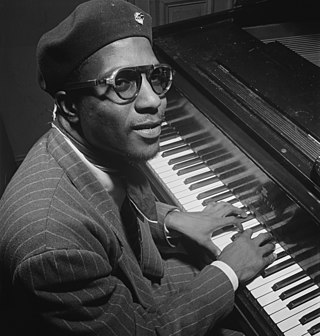
Thelonious Sphere Monk was an American jazz pianist and composer. He had a unique improvisational style and made numerous contributions to the standard jazz repertoire, including "'Round Midnight", "Blue Monk", "Straight, No Chaser", "Ruby, My Dear", "In Walked Bud", and "Well, You Needn't". Monk is the second-most-recorded jazz composer after Duke Ellington.
Thelonious Monster is an American punk rock band from Los Angeles, California, led by singer-songwriter Bob Forrest and named after jazz musician Thelonious Monk. Active from 1984 to 1994, again from 2004 to 2011, and reforming a second time in 2019, the band has released five original studio albums. The band has a large cult following and is considered to be a seminal and influential band in the 1980's L.A. underground music scene, alongside acts like Jane's Addiction and Red Hot Chili Peppers. They've been described as having "traced emotional dips and bends with exceptional acuity and impact".

John Carl Hendricks, known professionally as Jon Hendricks, was an American jazz lyricist and singer. He is one of the originators of vocalese, which adds lyrics to existing instrumental songs and replaces many instruments with vocalists, such as the big-band arrangements of Duke Ellington and Count Basie. He is considered one of the best practitioners of scat singing, which involves vocal jazz soloing. Jazz critic and historian Leonard Feather called him the "Poet Laureate of Jazz", while Time dubbed him the "James Joyce of Jive". Al Jarreau called him "pound-for-pound the best jazz singer on the planet—maybe that's ever been".
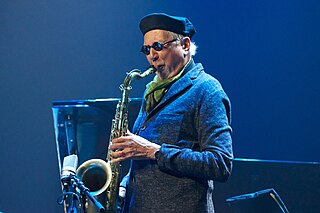
Charles Lloyd is an American jazz musician. Though he primarily plays tenor saxophone and flute, he has occasionally recorded on other reed instruments, including alto saxophone and the Hungarian tárogató. Lloyd's primary band since 2007 has been a quartet including pianist Jason Moran, acoustic bassist Reuben Rogers, and drummer Eric Harland.
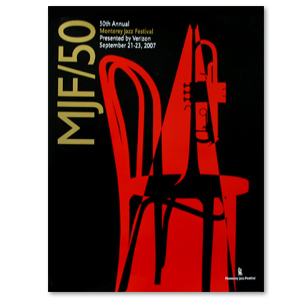
The Monterey Jazz Festival is an annual music festival that takes place in Monterey, California, United States. It debuted on October 3, 1958, championed by Dave Brubeck and co-founded by jazz and popular music critic Ralph J. Gleason and jazz disc jockey Jimmy Lyons.

Jason Moran is an American jazz pianist, composer, and educator involved in multimedia art and theatrical installations.
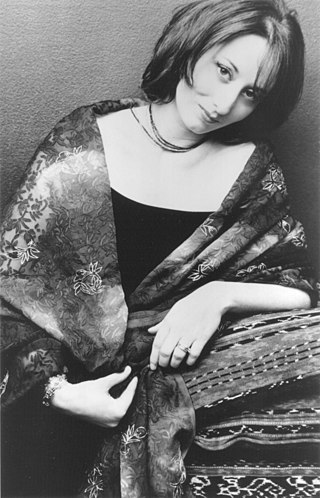
Irene Louise Rosnes, known professionally as Renee Rosnes, is a Canadian jazz pianist, composer, and arranger.

The SFJAZZ Collective is an American jazz ensemble comprising nine performer/composers, launched in 2004 by SFJAZZ, a West Coast non-profit jazz institution and the presenter of the annual San Francisco Jazz Festival.

Miguel Zenón is a Puerto Rican alto saxophonist, composer, band leader, music producer, and educator. He is a Grammy Award winner, the recipient of a Guggenheim Fellowship, a MacArthur Fellowship., and a Doris Duke Artist Award. He also holds an Honorary Doctorate Degree in the Arts from Universidad del Sagrado Corazón. Zenón has released many albums as a band leader and appeared on over 100 recordings as a sideman.

Eastwood After Hours: Live at Carnegie Hall is a two-disc live album by American actor Clint Eastwood and various jazz musicians. Released on April 29, 1997, by Warner Bros. Records, it compiles material from Eastwood's film scores—including Play Misty for Me (1971), Honkytonk Man (1982), Bird (1988), Thelonious Monk: Straight, No Chaser (1988), and White Hunter Black Heart (1990)—performed by some of the most reputable practitioners of jazz. Issued five months after the concert, Eastwood After Hours coincided with celebrations for Eastwood's contributions to jazz, and was overseen by producer Bruce Ricker.

Gretchen Parlato is an American jazz singer. She has performed and recorded with musicians such as Wayne Shorter, Herbie Hancock, Kenny Barron, Esperanza Spalding, Terence Blanchard, Marcus Miller and Lionel Loueke.

The Herbie Hancock Institute of Jazz is a non-profit music education organization founded in 1986. Before 2019, it was known as the Thelonious Monk Institute of Jazz, but was then renamed after its longtime board chairman, Herbie Hancock.
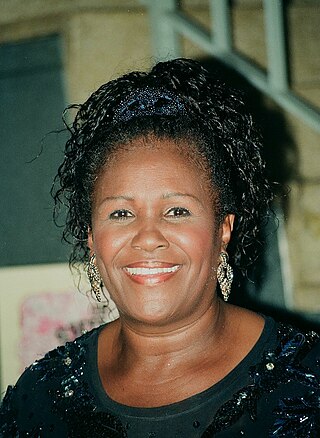
Queen Esther Marrow is an American soul and gospel singer and actress.
"In Walked Bud" is a 1947 jazz composition by Thelonious Monk. It was composed by Monk in honor of his friend, fellow pianist Bud Powell, and based in part on the Irving Berlin standard "Blue Skies". Monk recorded many renditions of "In Walked Bud" throughout his career, and it has been covered numerous times by other artists.

Dmitri Matheny is an American jazz flugelhornist. According to the San Francisco Chronicle, Matheny is “one of the jazz world’s most talented horn players.”

The SFJAZZ Center is an all-ages music venue in the Hayes Valley neighborhood of San Francisco, California, that opened in January 2013. It is considered the "first free-standing building in America built for jazz performance and education." It is home to SFJAZZ, a not-for-profit organization that both presents and facilitates jazz education in the San Francisco Bay Area. SFJAZZ has, since 1983, produced the San Francisco Jazz Festival, and since 2004, the SFJAZZ Collective. The SFJAZZ season, in addition to the SFJAZZ-produced San Francisco Jazz Festival and Summer Sessions, includes over 400 performances annually in the San Francisco Bay Area.

Robert Darrin Stewart is an American saxophonist. He recorded several albums under his own name during the period 1994–2006. He has also recorded as a sideman, including on trumpeter Wynton Marsalis' Blood on the Fields. Stewart went on multiple national and world tours during his 30-year career as a performer, both under his own name and with the Marsalis band.

Make It Funky! is a 2005 American documentary film directed, written and co-produced by Michael Murphy. Subtitled in the original version as "It all began in New Orleans", the film presents a history of New Orleans music and its influence on rhythm and blues, rock and roll, funk and jazz. The film was scheduled for theatrical release in September 2005, but was pulled by distributor Sony Pictures Releasing so that they did not appear to take commercial advantage of the devastation caused by Hurricane Katrina.


















